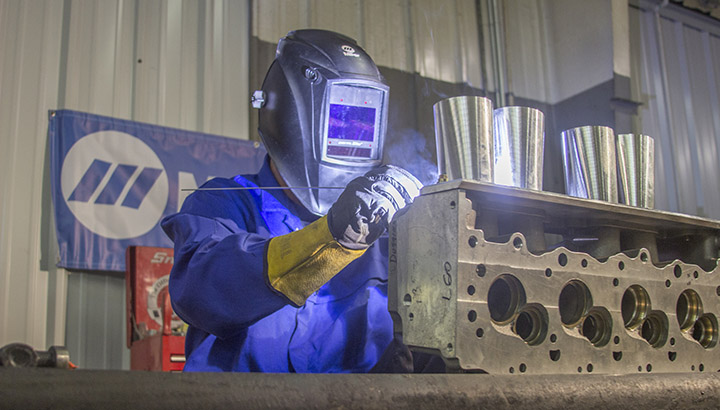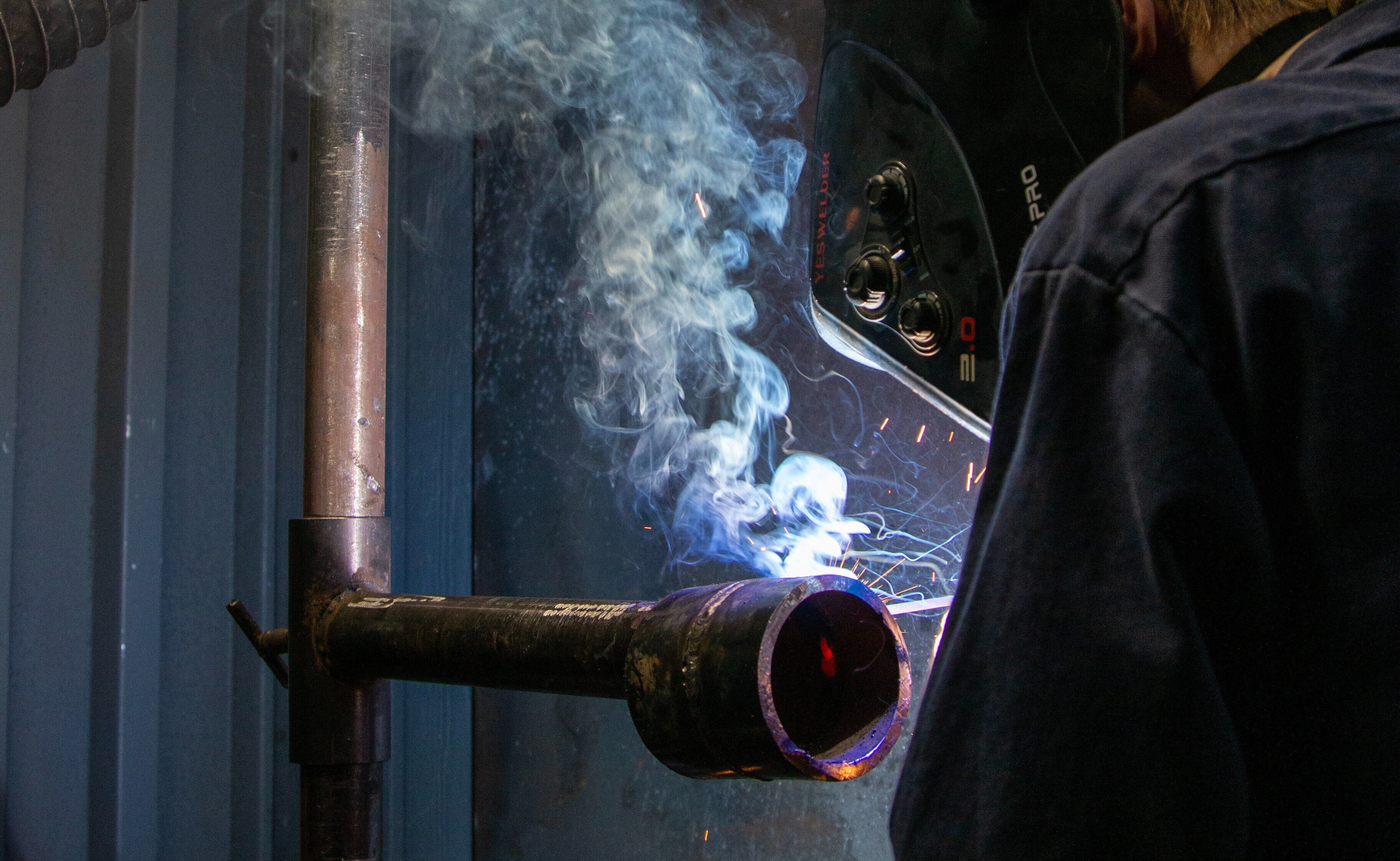Common Welding Repair Work Issues and Exactly How to Address Them Efficiently
Welding repair work frequently run into a variety of problems that can threaten the stability of the last item. Usual problems consist of insufficient infiltration, porosity, and imbalance, to name a few. Each flaw provides unique challenges that require particular approaches for resolution. Understanding these problems is crucial for welders aiming to boost their abilities and end results. This discussion will certainly explore these usual welding repair service issues and reliable techniques to resolve them.
Inadequate Penetration
Inadequate infiltration takes place when the weld steel fails to completely fuse with the base material, leading to weak joints and possible structural failings. This issue often stems from insufficient warm input, inaccurate electrode angle, or improper welding rate. Welders may encounter insufficient penetration due to a miscalculation of the necessary specifications for a particular material thickness or kind. In addition, contamination on the base material's surface can impede reliable bonding, aggravating the issue. To address poor penetration, welders need to assure proper settings on their equipment and keep a clean work surface. Regular examination of welds is advised to determine any deficiencies early, permitting for timely improvements and the prevention of compromised architectural honesty in welded assemblies.
Porosity
Porosity is an usual problem in welded joints that shows up as tiny gas bubbles entraped within the weld metal. This flaw can endanger the integrity of the weld, leading to reduced toughness and potential failure under stress and anxiety. Welding. Porosity usually occurs from contamination, wetness, or incorrect welding strategies, which permit gases to leave into the liquified weld pool. To resolve porosity, welders need to ensure proper surface preparation, keep a tidy functioning setting, and utilize ideal welding specifications. Furthermore, choosing the appropriate filler material and shielding gas can mitigate gas entrapment. Normal inspection and testing of welds can help identify porosity early, assuring prompt restorative actions are taken, thus preserving the quality and integrity of the welded framework
Imbalance
Misalignment in welding can emerge from numerous elements, including improper arrangement and thermal expansion. Understanding the origin is important for reliable resolution. Numerous adjustment techniques are offered to realign parts and assure architectural honesty.
Root causes of Misalignment
Welding imbalance frequently originates from a range of underlying problems that can endanger structural stability. One primary reason is improper fit-up of components before welding, which can lead to gaps and irregular surfaces. Variations in thermal expansion throughout the welding process can likewise lead to distortion, especially if the products being joined have various coefficients of development. Furthermore, inadequate securing and fixturing might fall short to hold parts securely in position, causing movement during welding. Poorly maintained tools, including welding equipments and devices, might present incongruities in the weld bead, additional adding to misalignment. Ultimately, operator mistake, coming from insufficient training or experience, can also play a considerable function in producing misaligned welds.
Adjustment Methods Offered
Attending to imbalance successfully needs a combination of rehabilitative strategies customized to the details problems handy. One typical technique is the usage of jigs or components to hold components in the proper setting throughout welding, ensuring regular placement. Additionally, pre-heating the products can help in reducing distortion and improve fit-up. For substantial misalignment, mechanical realignment techniques, such as utilizing hydraulic jacks or clamps, can be utilized to fix the position before welding. Post-weld heat treatment may likewise be necessary to ease anxieties created by imbalance. Cautious evaluation and modification during the setup stage can prevent misalignment problems from coming to be significant troubles, promoting a smoother welding process and boosting general architectural stability.
Distortion
Distortion is a common obstacle in welding that can develop from different aspects, consisting of irregular home heating and cooling. Recognizing the root causes of distortion is important for applying reliable prevention strategies. Addressing this issue not just improves structural honesty but likewise improves the total quality of the weld.
Sources of Distortion
When subjected to the intense warmth of welding, products usually undergo changes that can result in distortion. This sensation largely arises from thermal development and contraction during the welding procedure. As the weld location warms up, the product broadens; upon air conditioning, it contracts, which can create internal stress and anxieties. Furthermore, uneven home heating throughout a workpiece can aggravate these stress and anxieties, leading to warping or flexing. The sort of product additionally plays a considerable role; metals with varying thermal conductivity and coefficients of expansion may react differently, leading to unpredictable distortions. Poor joint design and poor fixturing can add to misalignment throughout welding, boosting the probability of distortion. Comprehending these reasons is important for efficient welding fixing and prevention techniques.
Prevention Techniques
Effective avoidance methods for distortion during welding concentrate on managing heat input and making sure correct joint design. Keeping a regular heat input aids to lessen thermal expansion and tightening, which can bring about distortion. Using methods such as pre-heating the workpiece can additionally lower the temperature slope, advertising consistent home heating. In addition, choosing appropriate joint designs, such as T-joints or lap joints, can improve security and minimize tension focus. Executing proper fixturing to protect the work surfaces in location even more help in maintaining alignment during the welding process. Ultimately, staggered welding sequences can distribute warm extra uniformly, preventing localized distortion. By using these approaches, welders can significantly lower the likelihood of distortion and enhance the total high quality of their welds.
Cracking
Cracking is a typical concern experienced in welding fixings, typically arising from numerous elements such as inappropriate cooling prices, product choice, or insufficient joint prep work. The incident of cracks can greatly jeopardize the stability of the weld, bring about potential failings throughout procedure. To address this concern, welders must initially evaluate the origin, making certain that products are suitable and suitably picked for the details application. In addition, regulating the air conditioning price throughout the welding process is important; rapid cooling can induce stress and anxiety and lead to cracking. Correct joint layout and prep work likewise contribute to minimizing the threat. Applying these approaches can improve weld quality and toughness, eventually decreasing the likelihood of fracturing in completed weldments.

Insufficient Fusion
A substantial problem in welding fixings is incomplete blend, which happens when the thermocouple welder weld metal does not sufficiently bond with the base product or previous weld passes - Fabrication. This problem can lead to weaknesses in the joint, potentially compromising the honesty of the welded structure. Aspects contributing to incomplete combination consist of insufficient warm input, improper welding technique, and contamination of the surfaces being signed up with. To address this problem effectively, welders ought to ensure correct pre-weld cleaning and surface prep work, along with readjust their welding specifications to achieve appropriate infiltration and fusion. Routine assessment during the welding process can likewise help determine insufficient combination early, allowing for prompt restorative procedures to boost the total top quality of the weld
Overheating
While welding repair services can boost architectural integrity, overheating presents a considerable difficulty that can cause material deterioration. Too much warmth throughout welding can alter the mechanical buildings of steels, leading to lowered toughness, raised brittleness, and warping. This phenomenon is particularly essential in high-stress applications where architectural integrity is extremely important. Identifying overheating can involve aesthetic assessments for discoloration or distortion, along with keeping an eye on temperature during the welding process. To mitigate the threats linked with overheating, welders ought to use ideal strategies, such as controlling warmth input, changing traveling rate, and using suitable filler products. In addition, carrying out pre- and post-weld heat therapies can help restore product residential or commercial properties and improve the total high quality of the repair work, guaranteeing lasting efficiency and security.
Often Asked Inquiries
What Are the Usual Indications of a Welding Problem?

How Can I Evaluate My Welds for Top quality?
To check welds for top quality, one can utilize visual evaluations, ultrasonic screening, and radiographic approaches. Each technique ensures structural stability, determines problems, and verifies adherence to specified standards, inevitably boosting the integrity of the welded joints.
What Security Preventative Measures Should I Take While Welding?
When welding, one ought to prioritize security by putting on ideal individual protective tools, guaranteeing proper air flow, safeguarding combustible materials away, maintaining a clean office, and understanding surroundings to stop crashes and injuries.
Can I Fix a Weld Without Redoing the Entire Joint?
Repairing a weld without renovating the entire joint is feasible, depending on the damage (Montana Mobile Welding and Repair Welding). Strategies such as grinding, tag welding adding filler material, or making use of a welding procedure can efficiently resolve certain problems while preserving the bordering framework
What Equipment Are Important for Reliable Welding Repairs?
Crucial tools for reliable welding repair work consist of a welding maker, cable brush, mill, safety gear, clamps, and filler products. Each device plays an important duty in making certain high quality and safety and security throughout the fixing process. Porosity commonly arises from contamination, wetness, or inappropriate welding methods, which enable gases to run away right into the molten weld pool. Improperly maintained devices, consisting of welding clarke mig welder makers and devices, may introduce variances in the weld grain, additional adding to imbalance. When subjected to the extreme heat of welding, materials typically undertake changes that can lead to distortion. Breaking is a typical concern encountered in welding repairs, typically resulting from different aspects such as improper cooling rates, product selection, or inadequate joint prep work. A substantial issue in welding repair work is insufficient blend, which takes place when the weld steel does not sufficiently bond with the base product or previous weld passes.